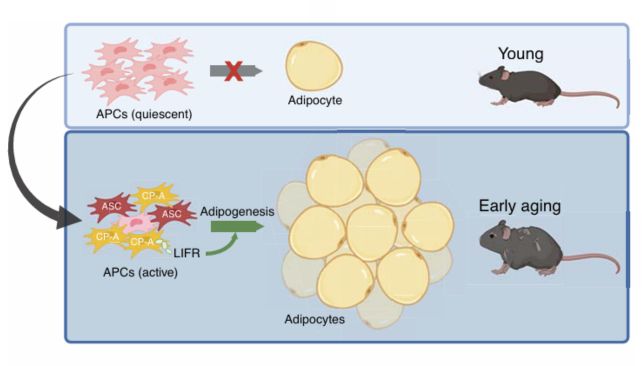Aging appears to unlock adult stem cells programmed to create more problematic belly fat cells, new research in mice and human tissues reveals.
"This is the first evidence that our bellies expand with age due to the stem cell's high output of new fat cells," says City of Hope endocrinologist Adolfo Garcia-Ocana.
These age-specific stem cells, called committed preadipocytes (CP-As), are found in white fat tissue, which is known to increase in humans during age-related weight gain.
"People often lose muscle and gain body fat as they age – even when their body weight remains the same," explains endocrinologist Qiong (Annabel) Wang from the Arthur Riggs Diabetes and Metabolism Research Institute.
"We discovered aging triggers the arrival of a new type of adult stem cell and enhances the body's massive production of new fat cells, especially around the belly."
This can occur even without changes in diet and exercise.

When researchers transplanted stem cells from the white fat tissue in younger male mice to older male mice, they didn't produce fat cells. This means that something during the aging process is responsible for the change in how these cells proliferate, rather than the environment they're currently in.
"While most adult stem cells' capacity to grow wanes with age, the opposite holds true [here] – aging unlocks these cells' power to evolve and spread," says Garcia-Ocana.
The team suggests this switch to greater fat production may be due to cell aging or immune dysregulation. More immune cells accumulate in white fat tissue with age.
RNA analysis identified changes between the young and old mouse stem cells, including one of the specific signaling pathways (leukemia inhibitory factor receptor, or LIFR) involved in telling these specific stem cells to make more fat. This might be a useful target for developing interventions.
Taking samples from five humans of different ages (with only one female donor), the team found the same stem cells were more active in older humans as well as in mice.
A larger sample size with more female donors is required to confirm this trend is universal, the researchers caution. Meanwhile, the best way to keep on top of these age-related changes is to increase your movement.
"Understanding the role of CP-As in metabolic disorders and how these cells emerge during aging could lead to new medical solutions for reducing belly fat and improving health and longevity," concludes Wang.
This research was published in Science.
